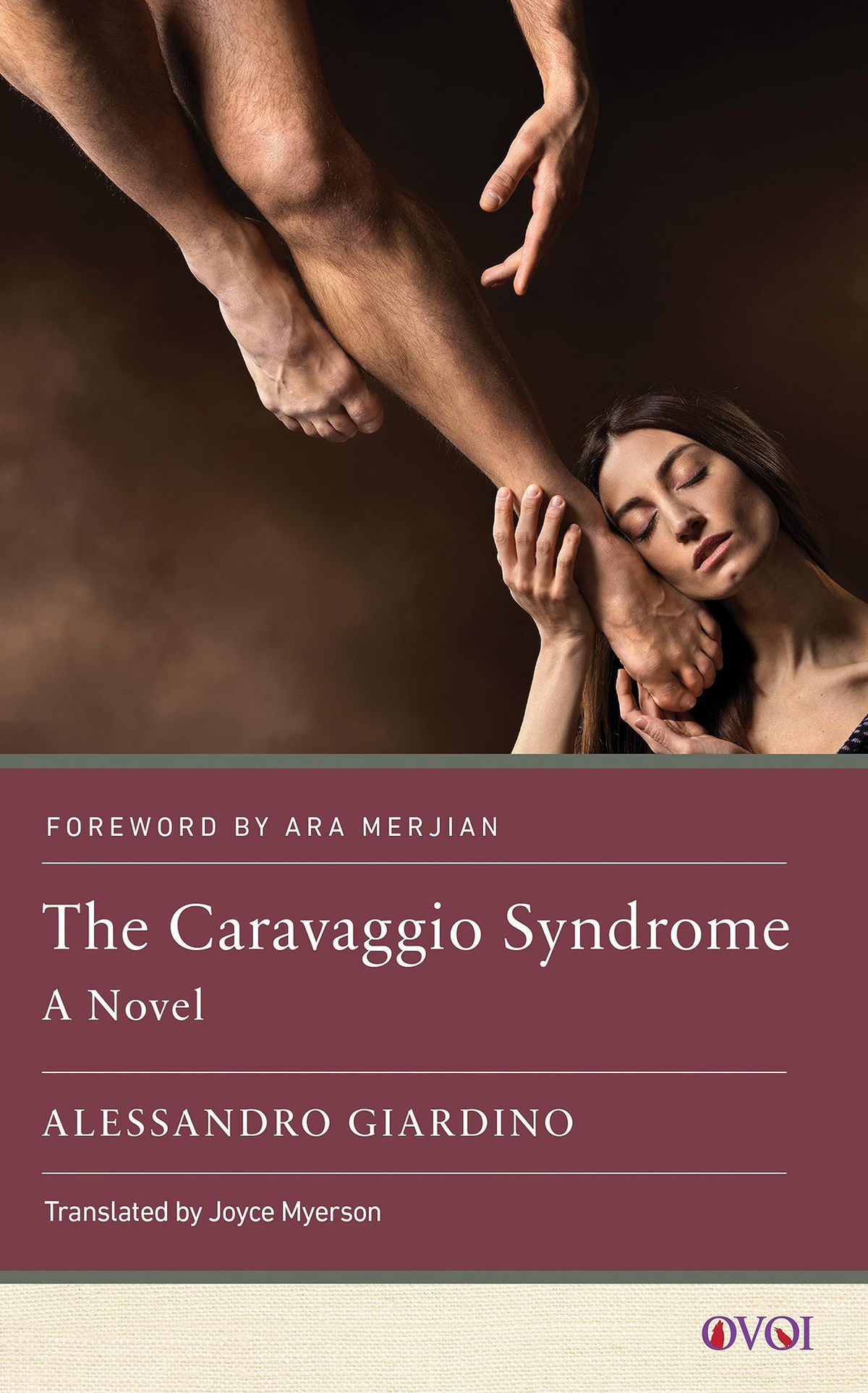Caravaggio’s faces are hard to forget—consider the beautiful fortune teller, her almond-shaped eyes casting a spell over her young customer as she is easing a ring off his finger; the preadolescent Cupid, wide-eyed and round-cheeked, whose grinning lips part to reveal stained teeth. Caravaggio (born Michelangelo Merisi, 1571-1610) painted his sitters dal naturale, attentive to the most minor details—the circles under a man’s eye, the delicate curl drifting down a woman’s temple, the pallor of a model’s skin in his dimly lit studio. He did so without preparatory drawings, and while he might have enhanced what he saw, we can easily picture these people walking the streets of Rome or Naples even today.
The novelist Alessandro Giardino, in his other life as a professor of Italian at St Lawrence University in Canton, New York, has long been fascinated by Caravaggio and particularly by one of his later paintings, The Seven Works of Mercy (around 1607), a daring attempt to envision various acts of Christian charity taking place, all at once, on a dark street in Naples. The subject of one of Giardino’s scholarly articles, the painting also provides the impetus for his first novel, The Caravaggio Syndrome, originally published in Italian in 2021.
In a climactic scene towards the end of the novel, Michael, an American art history student visiting Naples, finds himself in the church of Pio Monte della Misericordia, where Caravaggio’s large canvas still hangs: “the painting appeared before him like an ancient mastodon, high and mighty and seemingly displeased for having been made to wait for so long.” But the encounter has been worth waiting for. Michael’s eyes, squinting in the dark, linger on the different instances of kindness crammed into the scene, from the woman on the right nursing an old man (a version of the ancient story of Pero and her jailed father Cimon) to the feet of the bundled-up corpse in the centre being hauled away for burial, the innkeeper on the left offering shelter to a weary traveller, the water-guzzling biblical Samson in the background and the coat-sharing St Martin in the foreground. Above it all, floating on angels’ wings, sits the Virgin holding her child. The reigning impression here is not mercy but chaos, a helter-skelter melange of disparate stories.
Yet Michael thinks he has found the key to Caravaggio’s painting, and it is not a conventionally religious one: “he wondered if the Seven Works could not represent the seven days of the week or the house of the Sun and the planets gravitating around it.” Which just happens to be the conclusion also of Giardino’s article, where he contended that, having fled to Naples after killing a man in Rome, Caravaggio had come under the influence of the imprisoned Dominican friar and infamous heretic Tommaso Campanella (1568-1639).
Since he is a novelist as well as a scholar, Giardino is in the enviable position of being able to imagine the appropriate evidence to go with his theory. And so, in The Caravaggio Syndrome, he simply adds Campanella himself to his cast of characters, interspersing the friar’s voice with those of Michael and of Michael’s art history professor, Leyla d’Andria, who is—surprise!—an expert on both Caravaggio and Campanella. Caravaggio and Campanella likely never met, but in Giardino’s novel they do, late at night, in the candlelit church where the friar, sprung from prison for just that purpose, inspects The Seven Works and finds his astrological ideas wonderfully represented. Hypothesis confirmed.
But The Caravaggio Syndrome is more than a fictionalised art history lesson. Early on in the novel, Leyla, recalling the word’s Greek roots, defines “syndrome” as “convergence”, and it is a pleasure to see how the author connects the various lives in the novel: how Michael meets and falls in love with Pablo, Leyla’s burly lover (and the father of her son), and how Leyla, liberated from her past academic life, settles in Paris, where, almost 400 years earlier, Campanella, freed from a much grimmer kind of jail, had also ended up. Giardino’s characters are as unforgettable and viscerally real as any of Caravaggio’s figures, and his novel is so beautifully told that few readers will flinch when the occasional narrative twist strains credulity—when, for example, Campanella dreams of being reborn in the modern world by a woman named Leyla (Leyla’s son is, of course, named Tommaso).
A few jarring notes aside (the word “pachyderm” did not exist before the 1800s), Giardino shifts smoothly between the past and the present. With his bronzed skin and muscular legs, Pablo could easily have served as a model for one of Caravaggio’s street-smart louts. He is eventually discovered dead in a Naples warehouse—a Caravaggesque ending of sorts. Leyla, meanwhile, begins to crawl out from under the painter’s shadow, the only one in the novel to shed the “syndrome”. With Michael and Tommaso departing for the States, she remains in Paris, enjoying what seems to have eluded Caravaggio his entire life—sweet solitude.
• Alessandro Giardino, translated by Joyce Myerson and the author with a foreword by Ara Merjian, The Caravaggio Syndrome: A Novel, Rutgers University Press, 210pp, four colour & four b/w illustrations, $27.95/£14.99 (pb) $68.95 (cloth), published 12 April
• Christoph Irmscher is a critic and biographer


